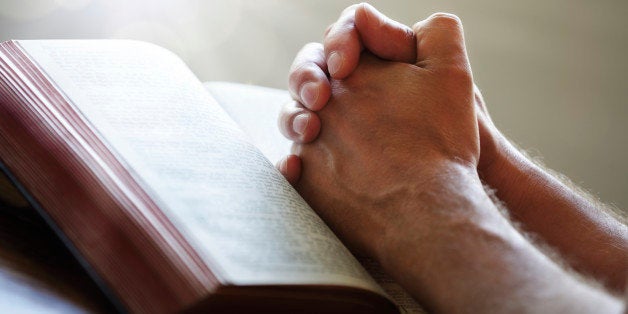
I cannot recall exactly when the idea of prayer began to change radically in my own life. Prayer, for me, used to stand as something separate from other parts of my life. But I have come to learn that real prayer is not so much talking to God as just sharing God's presence. I find I'm able to live in a kind of Christian nonchalance rooted in a trust of God that severs the old double-standard morality game I used to play with God. I can no longer conceive of lying to God in proper Old English or any other style of speech. I feel completely myself with God.
During a Freedom Ride in the Deep South in 1961, I remember someone said, "It seems to me this is really a kind of prayer -- a kind of corporate confession of racial sin." Some people said the Freedom Ride was essentially a sermon. But I realize now that it was a prayer.
God, I discovered, was not an upper-middle-class snob, an impersonal I.B.M. machine computing petty sins in some celestial office building above the clouds. It came home to me that God was loving, in a terribly unsentimental and profound way. I came to realize that many prayers are offered without the prescribed forms of piety, and even sometimes in a language that some Puritans might label as profane. For example, Jerry's monologue in Edward Albee's play The Zoo Story is a prayer. If you will listen, you can hear prayers in the novels, songs, plays and films of Samuel Beckett, Ralph Ellison, Ingmar Bergman, Saul Bellow, Bob Dylan, Tennessee Williams, James Baldwin, William Golding, Michelangelo Antonioni, Jean Genet or John Updike. Prayer bridges the heretical gulf between the sacred and the secular, the holy and profane. Of course, to hear some prayers, verbal or nonverbal, you must listen for what was not said.
Naive and superstitious misconceptions about prayer have never ceased to dismay me. On one occasion a 40-year-old man, an intellectual and cultural leader, confessed to me that he had stood in agony at his young son's grave, unable to pray because he did not know the words of a single prayer. During my stay at the Taizé Community in France in 1957, I learned how the integrity of grace before meals was linked to an action of fasting; prayer was offered on the fast day for persons in Asia who were starving to death. This grace, coupled with fasting from a meal, expressed solidarity with them in prayer.
The title of this blog comes from a favorite spiritual classic of mine, Holy Listening: The Art of Spiritual Direction, by Margaret Guenther. She cites two places that might seem unlikely places for prayer to many people. One is a subway, another is the kitchen. She speaks of the subway "where we cannot escape the sight of the wounded Body of Christ as a fruitful place for prayers of intercession," and repetitive tasks in the kitchen "that can be sanctified by the Jesus prayer."
In 1965 my slim volume of prayers, Are You Running With Me, Jesus? changed many people's lives, including my own. More than a million copies of the book appeared all over the world -- even on subways and in kitchens.